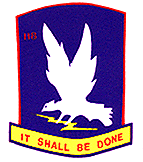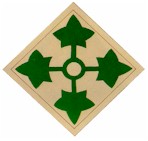 |
|
-67.jpg)
-67.jpg)
-67.jpg)
| MAJ. Bill Bradner, 118th XO was flying and in the left seat of "Thunderbird lead" was MAJ.Joe Boggs, the CO. Bill tells the following: "On my first approach, I had to land almost against a tree line to get the whole flight in LZ Gold. Just as I touched down, the LZ was one explosion after another and the trail aircraft told us we had three ships disabled in the LZ and two more flying out of control. A gunner by the name of Bobby Cutino took one of the M-60's from a disabled ship and began to lay down some defensive fire cradling the weapon in his arms. The infantry troops were dazed and all hunkered down a few yards from the aircraft. One of the ships that was out of control was flown by CPT Bob Kelly and MAJ. Bill Benton. It had been blown into the air and staggered out of the LZ but they said on the radio the controls were almost locked. Somehow they made it to an open spot a short distance from the LZ. When I got there, Bob was out of the aircraft and on the ground . He knew he had been hit in his upper thigh. The only question he had was something like 'is it still there'. We cut his trouser leg and found that he had a wad of commo wire embedded in his leg about four inches below the groin. He was evacuated to Tay Ninh and recovered OK." |
-67.jpg)
| Bill Bradner continues: "We left to return to the PZ to pick-up more troops to reinforce the folks on the ground. We found that a couple more ships had been badly damaged so we were left with only three. After picking up the troops we headed back and picked out an area about 200 yards away. We elected to come to a low hover instead of sitting down to let the troops off. As we came to a hover the VC set off another mine just in front of us and blew us back toward the ship behind us. We lost the chin bubble and part of the windscreen. Both doors were blown loose and we had dirt and crud all over us. We staggered out of the LZ and returned to the PZ to pick up the rest of the troops and check the ship for damage. I was really surprised when we looked it over because the whip antenna on the tail was completely missing and we had quite a few shrapnel holes in the skin but nothing too serious. Why we didn't lose our tail rotor I'll never know. We put in two more loads of troops and went to Tay Ninh to see how Bob Kelly was doing and later flew back to the 'Birdcage' at Bien Hoa" |
-67.jpg)
-67.jpg)
|
This is my account of
the Battle of Suoi Tre. I begin with some comments on Saturday,
March 18,1967, the date the operation was ORIGINALLY planned
to take place.
Sunday , March 19, 1967 (Palm Sunday) On the crank for the very first lift, one Thunderbird pilot reported a hot start. So, I requested that the spare aircraft replace him. The 68th AHC had the requirement to provide the spare for the operation. It was THAT aircraft that took the brunt of the explosion in the first lift. I am not sure but I believe we only had one aircrew member killed in this operation and it was the pilot of the SPARE AIRCRAFT . Those that were there may remember that one of the helicopters, on returning to the PZ following the last lift, had a fire in its fuel cell. We used all of the fire extinguishers available but could not put it out. We helplessly watched as the aircraft burned. The crew chiefs salvaged any parts they could take off of it safely. I think it was well documented that what happened to us at LZ Gold was command detonated mines. The major explosion in the 118th's formation in the first lift was a rigged unexploded 250 pound bomb. Had there been preparatory fires as some accounts have stated I believe there would have been a chance it would have disrupted the VC's command detonated scheme. I do not agree, as some accounts have stated, that the explosion was a rigged unexploded 155 artillery shell. I was later told by a person that was on the ground in LZ Gold that during the ground assaults by the VC and NVA, artillery pieces were fired point blank into the assaulting troops. One of the rare occasions where a normally indirect fire weapon was used in a direct fire role. The body count was reported to be in excess of 800. Joe Boggs, Thunderbird 6 |
-67.jpg)
|
"As we approached the LZ, both the door gunner and crew chief began firing their M-60's. At the time I thought this was just a precaution and normal procedure. In a matter of seconds it was apparent that we were taking fire and you could hear bullets passing through metal on the chopper. No one said anything and the pilots concentrated on making there approach and getting us on the ground." "As a grunt on board a chopper taking fire, it is a very helpless feeling. When you are on the ground and taking fire, you can find a place to hide. That wasn't the case on the chopper. The feeling of being totally at the mercy of fate is very prevailing and there isn't one damn thing you can do about it." "As each bird approached the ground, we started jumping off of them at approximately five feet or less. During the time that we were exiting the choppers, there was a large amount of incoming fire both from small arms, automatic weapons and mortars. I'm sure that there were also some RPG's being fired towards the choppers but at the time it was not something that was really important to me or my personnel. As quickly as possible we tried to make our way forward in an attempt to secure as much of the LZ as possible for the other lifts that would be coming in." "I recall that there was one chopper that was damaged to the point that it could not get back in the air. I'm not sure whether it was during this first insertion lift or during the second lift. I remember that the crew of the chopper stayed with us on the ground until later in the day when the LZ was more secure and they could be extracted. They may have been lucky in the fact that they didn't have to make any more insertions that day. At least they all survived that day and that was the important thing." Note: click the words BRONZE STAR to read about these 118th crew members. "My platoon lost 13 men during that operation. There were also a large number of wounded guys who survived mainly because there were pilots who risked everything to extract them to medical facilities. In January 27, 1967, almost two months prior to this battle and very near the Battle of Soui Tre, one of my platoon's men that didn't make it was my platoon medic who refused my orders to get on a bird and leave. Because of his heroic efforts, many of my men survived that engagement. I had the unfortunate honor of writing the Congressional Medal of Honor for him. That award was presented to his wife exactly one year from the date it was written. His name was Donald W. Evans Jr. from Ojai, California." |
| 1LT Tom Payne, Fire team leader with the Bandits remembers: "When the explosions happened it took everyone by surprise, even though we had secretly anticipated it was possible. As the damaged aircraft of the 118th staggered out of LZ Gold, there were too many to cover with fire teams so we broke down into single gun ships to follow them to the ground in open areas and clearings. We circled and watched and provided cover from above until help arrived. To my knowledge, not many of them received much gunfire from the VC as they sat damaged on the ground so we were lucky there. Our fuel ran low after a while because it was hot and the gun ships could carry only about 900 pounds, so we returned to the PZ where there were refueling bladders. I remember as we sat refueling one of our 118th AHC slicks came hovering back to the PZ with doors all ajar and warped and one counter weight on the rotor GONE. Amazing too was the fact that this crew had HOVERED the five or so miles from LZ Gold back to the PZ along the only road in the area. Quite a sight." |
-67.jpg)

|
Pages 136 & 137: The target for the helicopters was an egg-shaped clearing close to Suoi Tre, near the center of War Zone C and ninety kilometers northwest of Saigon. It was just three kilometers away from the area in which, during Operation ATTLEBORO four months earlier, the 1st Battalion, 28th Infantry, of the U.S. 1st Division had defeated elements of the 272d Viet Cong and 101st North Vietnamese Regiments at the battle of AP Cha Do. Events would reveal that the 272d had returned. On 19 March, in an area surrounded by a tree line of sparse woodland which had been blighted by defoliants, U.S. helicopters air landed the 3d Battalion of the 22d Infantry and the 2d Battalion, 77th Artillery (-), led by Lieutenant Colonels John A. Bender and John W. Vessey, Jr., respectively, under the control of the 3d Brigade, 4th Infantry Division (Colonel Garth). Their mission was to establish a fire support base (GOLD) in support of Phase II of JUNCTION CITY. Heavy action was not expected. However, from the outset it was apparent that things would be different at Suoi Tre. As the three lifts of choppers touched down, five heavy command-detonated charges were set off by the Viet Cong in the tiny clearing. Three helicopters were destroyed and 6 more damaged with a toll of 15 killed and 28 wounded.2 A Viet Cong claymore-type mine was also detonated against C Company of the 3d Battalion, wounding 5 infantrymen. After the 1st of the 26th had secured the area, the 36th South Vietnamese Ranger Battalion, among other units, occupied and helped secure it. On 21 March the 36th Rangers discovered batteries and a wire in the wood line near the fire support base; following the wire, they found four holes filled with explosives. There was a center hole, and radiating from it was wire leading to three other holes at a distance of about twenty-five meters. In each hole were the necessary detonating caps. In the center one were also the following rounds: eight 75-mm., seven 81-mm., fourteen 60-mm. and 105 pounds of TNT. The other holes had similar but smaller loads: only 35 pounds of TNT each and various numbers and types of U.S. ordnance. It was all set to be command detonated. From then on the Big Red One, when it placed artillery and air strike preparatory fires around and into any landing zone into which it was bringing troops, always used a number of instantaneous fused bombs to strike the planned landing site of its chopper lifts in order to cut any wires and yet not chew up the terrain so much that it would be difficult to land and traverse. |